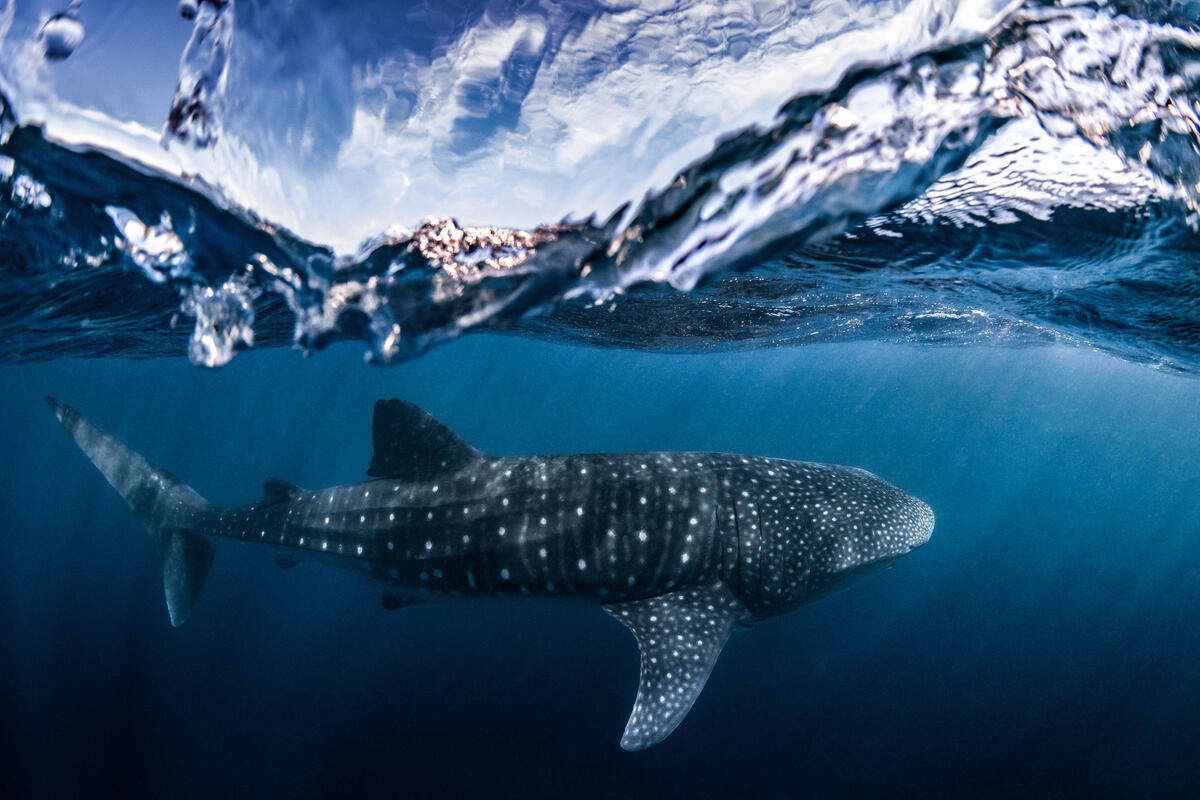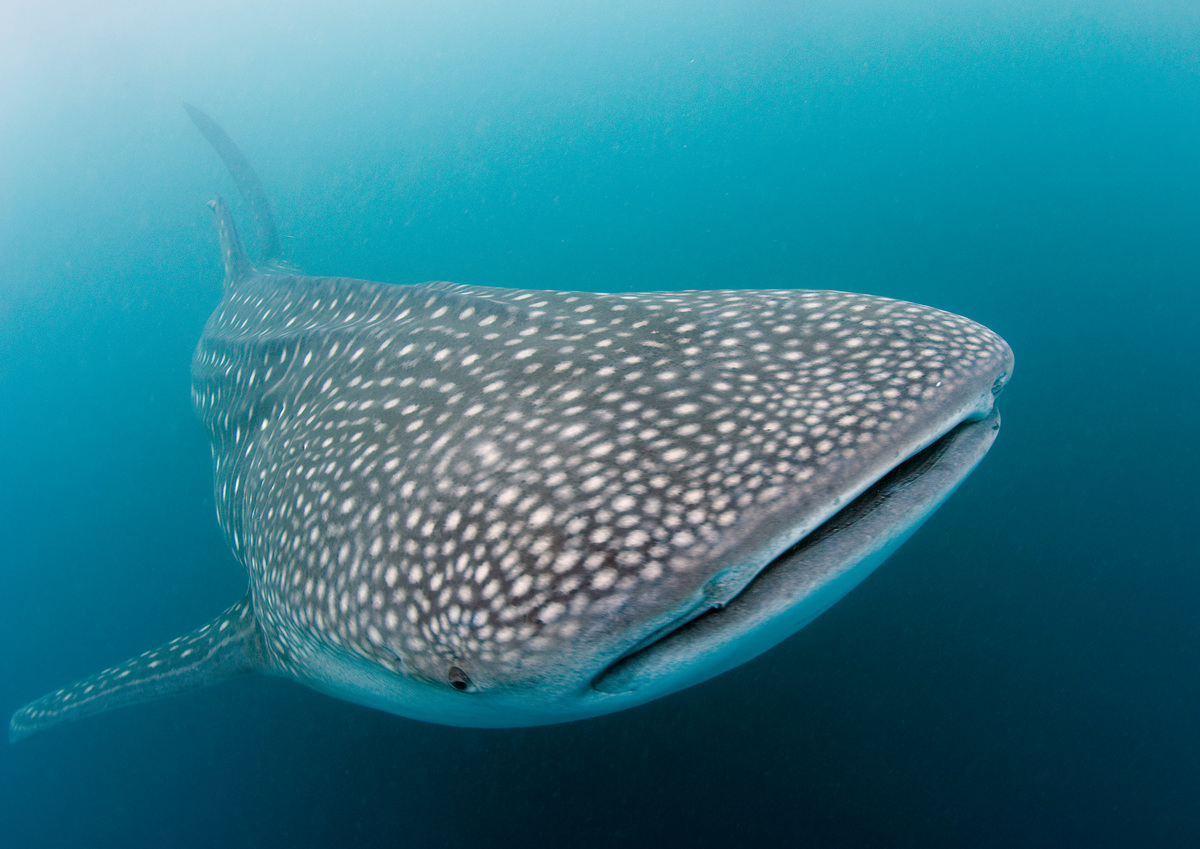The whale shark, the largest fish in the ocean, visits the waters of the Galapagos Marine Reserve on a regular basis. But there is something unique about the whale shark population in this area.
There are over 30 different species of sharks in the Galapagos Marine Reserve, and the biggest one by far is the whale shark.

Whale sharks are believed to have existed on Earth for 60-70 million years, coexisting with the last species of dinosaurs. They are present in all tropical and subtropical oceans, from Tasmania in the south to the east coast of North America, but seem to have a special relationship with the Galapagos Islands.
So what are they doing here? Whale sharks eat plankton, krill and small fishes that they catch by filtering huge amounts of water while swimming with their enormous mouths wide open, but this feeding behavior is very rarely seen in the Galapagos. Whale shark populations are unfortunately decreasing, by up to as much as 50%, and since 2016 they are listed as endangered by IUCN.
The Greenpeace ship Arctic Sunrise embarked on a six-week expedition around the Galápagos Islands in March to study and showcase the benefits of strong marine protection for one of the world's most celebrated natural treasures and its iconic local species.
The ones spotted here are among the biggest in the world, regularly measuring over 12 metres, and up to 99% of all the identified whale sharks in the Galapagos are adult females. As they often display distended bellies, some scientists also believe that these females could be pregnant. Whale sharks can live to be 150 years old and begin mating when they are in their thirties. Scientists here have been able to carry out a number of ultrasound scans on the sharks visiting the Galapagos, and so far, there is no evidence that they're coming to the area to give birth. We're not entirely sure what they are doing here but at least while they are here, they are safe.
The Galapagos Marine Reserve is one of the best examples of ocean protection in the world. But just outside the reserve, vast industrial fishing fleets continue to set their hooks and nets, catching not just their target fish species, but many other vulnerable marine wildlife, including sharks. Some of these fleets travel thousands of miles to fish these waters, and spend months at sea.
Although direct fishing of whale sharks is now banned in most countries, since the 1990s they've remained a target for fishing and may also be caught as bycatch - mostly by illegal, unregulated or unreported fisheries. Plastic pollution is also a serious problem, now present in all global oceans. Plastic ends up in their bodies as they filter their food.

Whale sharks are migratory species, even if their exact movements are still to be defined. It is during their migratory routes that the sharks are most exposed to human threats: scientists have also recently discovered that these gentle giants are at risk from collisions with marine traffic, and that this may be a far more significant cause of death than previously thought.
It is clear that we need more marine reserves in international waters, where these magnificent creatures migrate, and we need them now. Understanding the habitat needs and movement pathways for these and other endangered marine migratory species will help design the most efficient way to protect at least 30% of the oceans by 2030. This can be done if governments across the globe act now to ratify the Global Ocean Treaty.
All life on Earth came from the ocean, if we cannot protect it and its extraordinary species, we are putting all life on Earth at risk. Healthy oceans with healthy whale sharks, and an abundance of other marine species, are key to the future of our planet.
Add your name to call on leaders to create new ocean sanctuaries and protect our blue planet
Daniel Bengtsson is the Head of Communications with Greenpeace Nordic.






